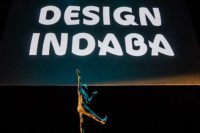Last week, some 1,000 members of the National Organization of Minority Architects (NOMA) gathered in New York for the organization’s 47th annual conference. Titled Believe the Hype: A Global Collective of Industry Change Agents, the program attracted nearly all of NOMA’s 1,300 professionals—and about half of all licensed African-American architects in the United States. Across the 100+ events, the conversation focused on strategies for recruiting the next generation of professionals.
The low number of licensed African-American architects—which has hovered around two percent of the industry total for three decades—is the biggest issue NOMA is facing. The organization’s president, Kimberly Dowdell, a principal in the Chicago office of HOK, used her conference address to outline an ambitious plan to double the number of licensed black architects from 2,300 to around 5,000 by 2030. (The AIA’s Large Firm Roundtable is supporting these efforts, as large practices in general seek to diversify.) Dowdell’s Access, Leadership, and Legacy (ALL) platform calls for bolstering NOMA’s existing Project Pipeline Camps, which introduce design training and the idea of becoming an architect to children as young as kindergarteners, as well as adding a new Foundation Fellowship program to place students from accredited undergraduate or graduate architecture programs in 12-week paid internships in firms, and subsidizing their housing, travel, and licensure exam fees.
NOMA’s strategies offer a prototype of incentives the profession at large could reproduce, at a time when high education costs and low pay continue to make architecture less attractive than other professions. The total number of U.S. architects rose two percent from 2017 to 2018, according to the National Council of Architectural Registration Boards. But racial, ethnic, and gender diversity continues to lag at more senior levels of the profession. Models such as Dowdell’s ALL program aim to change that landscape, not only by providing financial support but also mentorship at critical points for early-career designers.
Dowdell was inspired by the kind of “informal support” she received as an B.Arch. student at Cornell in 2004, when two NOMA mentors, Kathy Dixon and R. Steven Lewis arranged housing for her with their own families for her first jobs in Washington and New York. “That was how I learned that fostering community is what is uniquely special about NOMA,” Dowdell says.
Unlike in her case, new Foundation Fellows would receive a package of assistance—partly funded by NOMA’s new consultancy arm, which will deploy its diversity, equity, and inclusion experts to advise large firms, and partly from new corporate sponsorships Dowdell has established. These revenue streams are meant to sustain her initiatives beyond her one-year term as president.
The conference took place in locations throughout Brooklyn, Harlem, and lower Manhattan, and included lectures, seminars, and architectural tours. One theme was “cultural competency”; in the opening night J. Max Bond Jr. Lecture, for example, Zena Howard, managing director of Perkins and Will in North Carolina, highlighted her office’s restorative projects aimed at mending injustices created by decades of urban renewal. An example was Destination Crenshaw, the redesign of 1.3 miles of the historically black Los Angeles neighborhood disrupted by construction of the Crenshaw LAX Light Rail. Howard’s team is adding outdoor amphitheaters, observation decks, facade improvements, small parks, murals, and other commissioned artwork to create vibrant civic spaces around the rail line. The project is slated for completion in spring 2020.
Wisconsin-based designer Michael Ford presented his plans for the Universal Hip Hop Museum, set to open in the Bronx in 2023, and touched on how he uses a proprietary algorithm to show young students rap lyrics expressed as a visual sketch—line graphs on a page that mimic the short and tall volumes of a skyline. Ford teaches students to count beats in rap lyrics using his formula, then draw the line graphs, which gets them creating cityscapes on paper and as physical models. Other sessions touched on topics ranging from infrastructure to architecture that embraces black and queer communities.
Student chapters participated in an annual competition that this year asked them to address gentrification and housing equity in Brooklyn’s Flatbush neighborhood. And the organization renamed its decades-old design competition as the Phil Freelon Professional Design Awards, to honor the much-revered architect and mentor who died earlier this year.







Post a comment to this article
Report Abusive Comment